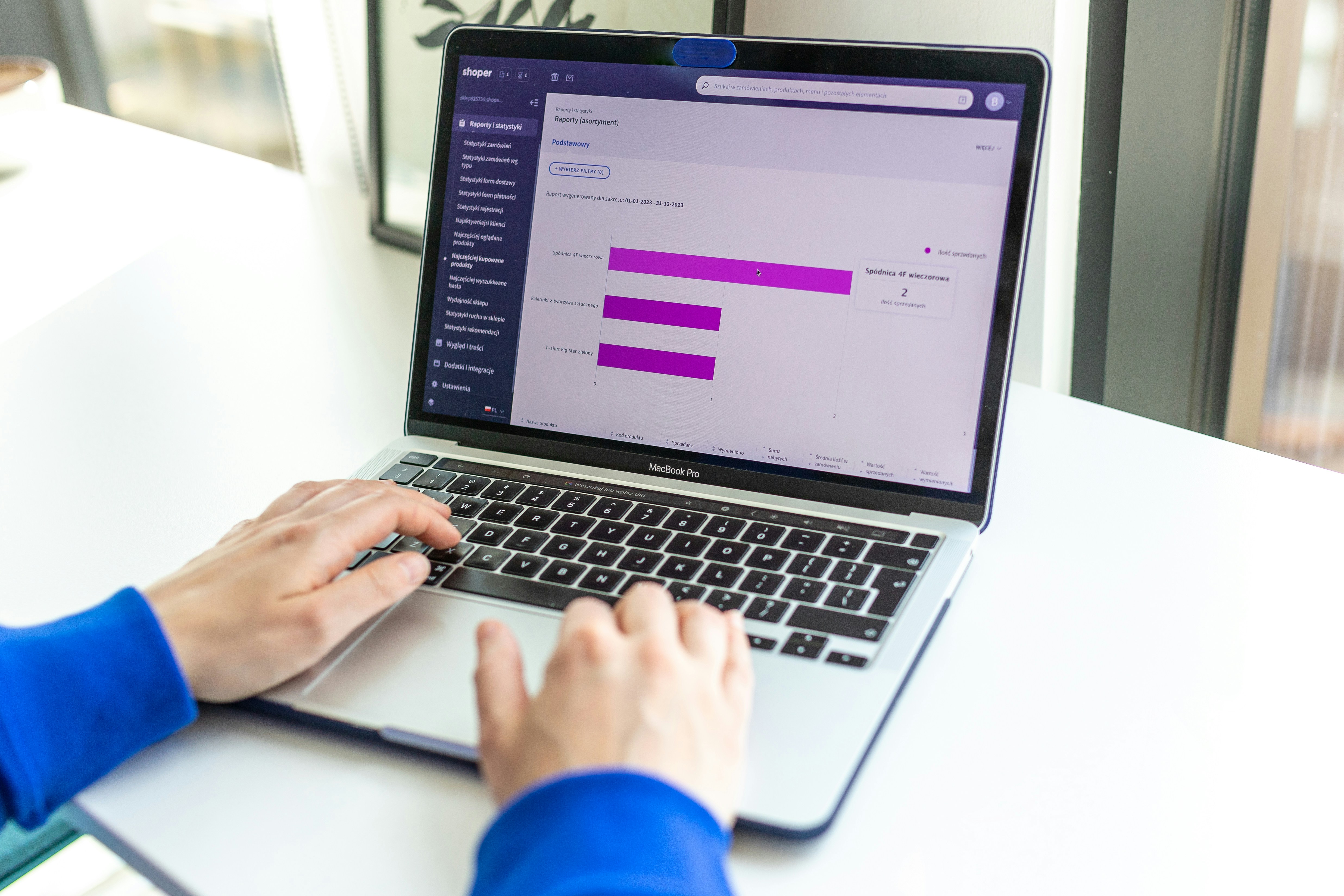So, 2025 is here and you're curious about this whole dropshipping thing everyone's talking about. Maybe you've seen those Instagram ads promising easy money, or perhaps a friend mentioned it as a side hustle. Well, let's cut through the noise and give you the real story about what dropshipping actually is, how it works, and whether it's worth your time and money.
What is Dropshipping?
Dropshipping is a business model where you sell products online without ever handling inventory. Think of yourself as the middleman who connects customers with suppliers. When someone buys from your online store, you forward that order to your supplier, who then ships the product directly to your customer.
Here's the simple version: You list products on your website → Customer buys from you → You buy from supplier → Supplier ships to customer → You keep the profit margin.
Is dropshipping legal? Absolutely. It's a completely legitimate business model used by companies of all sizes. The key is being transparent with customers about shipping times and return policies, which we'll cover later.
The appeal is obvious: you can start an online dropshipping business without buying inventory upfront, managing a warehouse, or handling shipping logistics. But first, let's dive into how this model actually works in practice.
How Does Dropshipping Actually Work?
Understanding the dropshipping process is crucial before you jump in. Let's break down exactly what happens from start to finish in a typical operation.
The 6-Step Process Explained
Step 1: You set up an online store and list products from suppliers at marked-up prices. Let's say you find a phone case that costs $8 from your supplier and you list it for $25.
Step 2: A customer visits your store and decides to buy that phone case for $25. They go through your checkout process and pay you directly.
Step 3: You receive the order notification and customer details through your store's system.
Step 4: You place the order with your supplier for $8, providing your customer's shipping address. You keep the $17 difference (minus fees).
Step 5: Your supplier processes the order and ships it directly to your customer, usually with your business name on the package.
Step 6: Your customer receives the product and hopefully loves it. If there are issues, you handle customer service.
Who Does What in the Chain
You (the dropshipper): Handle marketing, customer service, order processing, and store management. You're responsible for driving traffic and converting visitors into buyers in your dropshipping venture.
The supplier: Manages inventory, fulfillment, and shipping. They handle the physical aspects of the dropshipping business.
The e-commerce platform: Processes payments, hosts your store, and provides the technical infrastructure. Platforms like Shopify, Paage, or WooCommerce handle the behind-the-scenes technology.

Dropshipping Benefits vs Reality Check
Let's look at what makes dropshipping attractive and what you'll need to know to succeed in this market.
The Real Advantages
Low startup costs are probably the biggest draw. You don't need thousands of dollars to buy inventory upfront. Most people can start with $500-1000 for a basic setup.
No inventory management means no warehouse costs, no unsold stock gathering dust, and no dealing with physical products. Your supplier handles all of that in the dropshipping arrangement.
Location independence is genuine – you can run your business from anywhere with an internet connection. Many successful dropshippers travel while running their stores.
Easy to test products without major financial risk. If a product doesn't sell in your store, you simply remove it from your store. No need to worry about leftover inventory.
Scalability potential exists because your supplier handles fulfillment. In theory, you could process 10 orders or 1000 orders with similar effort on your end.
What You Need to Know Before Starting
To succeed in dropshipping, it's important to understand what you're getting into. Here are the key areas you'll need to master in this industry:
Marketing skills are essential. Since many dropshippers sell similar products, your success depends on how well you can reach and convert customers. Plan to invest time learning digital marketing or budget for advertising.
Manage your margins carefully. Factor in all costs upfront: advertising, platform fees, payment processing, and returns. Successful dropshippers typically aim for 3x markup to maintain healthy profits after expenses in their operations.
Customer service is your responsibility. You'll handle all customer interactions in your dropshipping business, even though you don't control shipping or product quality. Building good supplier relationships helps ensure smooth operations.
Choose suppliers wisely. Your reputation depends on their performance. Test suppliers thoroughly and have backup options for your best-selling products.
Set proper shipping expectations. Many dropshipping suppliers ship from overseas, which means longer delivery times. Clear communication with customers prevents most shipping-related issues.
The dropshippers who build sustainable businesses treat dropshipping seriously from day one. They invest in learning, focus on customer satisfaction, and continuously improve their operations.

How to Start Dropshipping in 2025
Step 1: Choose Your Niche Wisely
Don't just pick "trending products." Instead, focus on a specific audience with specific problems. Ask yourself: Who am I serving, and what problem am I solving with my dropshipping store?
Good dropshipping niches often have these characteristics:
Passionate customers willing to pay premium prices
Products that solve real problems or fulfill genuine desires
Not overly saturated with competitors
Decent profit margins (aim for 3x markup minimum)
Research thoroughly before committing to your niche. Use Google Trends, check social media discussions, and analyze competitors. Look for niches where you can add real value through content, customer service, or product curation.
Step 2: Find Reliable Suppliers
Supplier quality makes or breaks dropshipping businesses. Don't just go with the cheapest option – prioritize reliability, communication, and product quality for your dropshipping venture.
AliExpress is popular for beginners but comes with long shipping times and variable quality. It's good for testing products but not ideal for long-term business growth.
Domestic suppliers cost more but offer faster shipping and better customer experience. Look for suppliers in your target market's country when possible for your operations.
Alibaba connects you with manufacturers for better prices and potentially private labeling opportunities, but requires larger minimum orders.
Specialized supplier platforms like Spocket, Oberlo, or SaleHoo can help you find vetted suppliers for dropshipping, though they charge fees.
Print-on-demand services like Printify, Printful, and Gelato offer a different dropshipping approach - they create custom products (t-shirts, mugs, phone cases, posters) only after orders are placed. This allows you to sell unique, branded designs rather than generic products.
Step 3: Build Your Online Store
This is where choosing the right platform becomes crucial for your success.
Shopify dominates the dropshipping space with robust apps and integrations. Plans start around $29/month, plus transaction fees and app costs. It's powerful for dropshipping but can get expensive quickly.
WooCommerce offers more customization but requires technical knowledge and separate hosting. Better for those comfortable with WordPress and integrations.
Amazon allows dropshipping but has strict rules and intense competition. You're also building on someone else's platform.
Newer platforms like Paage, with direct integrations to print-on-demand platforms like Printful, make it quick and easy to start selling custom products through dropshipping. You get professional-looking stores without the complexity or high fees of older platforms.
Whatever platform you choose for dropshipping, focus on:
Mobile-responsive design (most traffic comes from phones)
Fast loading speeds
Clear product descriptions and policies
Professional appearance that builds trust
Easy checkout process
Step 4: Launch and Market Effectively
Your dropshipping store is just the beginning. Without traffic, you have no business. Here's how to drive customers to your store:
Facebook and Instagram ads remain popular for dropshipping marketing, but costs have increased significantly. Start with small budgets ($5-10/day) and test thoroughly.
Google Ads can work well for specific product searches in dropshipping, but require keyword research and landing page optimization.
Content marketing through blogs, YouTube, or TikTok builds long-term traffic but takes time to show results.
Influencer partnerships can be effective if you find influencers whose audiences match your target customers.
Email marketing helps you build relationships with customers and encourage repeat purchases.
Social media organic reach is harder than ever, but still possible with consistent, valuable content about your products.
Budget at least as much for marketing as you did for store setup. Many dropshippers spend 20-30% of revenue on advertising.

What Products Should You Dropship?
Product selection can make or break your dropshipping business. Here's how to choose wisely in the dropshipping market of 2025.
Avoid oversaturated products like generic phone accessories or jewelry unless you have a unique angle for your store. Instead, look for products that solve specific problems or serve passionate communities.
Consider product characteristics: Lightweight items ship cheaper, unique products face less competition, and consumable items create repeat customers.
Seasonal products can be profitable in dropshipping but require careful timing and inventory management with suppliers.
Problem-solving products often perform better than impulse purchases in the dropshipping space. Think about what frustrates people in their daily lives.
Check patent and trademark issues before committing to products for dropshipping. Some items can't be legally imported or sold in certain countries.
Test small and scale gradually. Don't put all your marketing budget behind one product until you've proven demand in dropshipping.
Frequently Asked Questions
How much money do you need to start dropshipping? You can start dropshipping with $500-1000, covering store setup, initial marketing, and sample products. However, $2000-3000 gives you more flexibility for testing and marketing.
Can you start dropshipping with $100? Technically yes, but it's challenging. You'll have limited marketing budget and fewer platform options. Most successful dropshippers invest more upfront.
How much do beginner dropshippers make per month? Most beginners make $0-500 in their first few months of dropshipping. Some lose money initially due to learning curves and advertising costs. Successful dropshippers eventually earn $1000-10,000+ monthly, but this takes time and skill development.
Is dropshipping worth it in 2025? It depends on your expectations and commitment to dropshipping. If you're looking for easy money, probably not. If you're willing to learn marketing, provide good customer service, and treat it like a real business, dropshipping can be profitable.
What's the success rate of dropshipping? There's no official statistics, but most estimates suggest 10-20% of dropshippers achieve meaningful success. The majority quit within the first year due to challenges or unrealistic expectations about dropshipping.
Can you make $10,000 per month dropshipping? Dropshippers earning $10K+ monthly typically have years of experience, substantial advertising budgets, and treat it as a full-time business.
How long does it take to be profitable? Most successful dropshippers take 6-12 months to become consistently profitable. The learning curve for marketing, supplier management, and customer service takes time in dropshipping.
Is Amazon dropshipping worth it? Amazon dropshipping is challenging due to strict policies and competition, but some people succeed. It's generally harder than building your own store.
The Bottom Line
Dropshipping in 2025 is still a viable business model, but it's not the easy money opportunity many people think it is. Success requires treating it like a real business: investing in marketing, providing excellent customer service, and continuously optimising your operations.
If you're willing to put in the work and have realistic expectations, dropshipping can provide location independence and decent income. Just remember – like any business, dropshipping takes time, effort, and usually some upfront investment to see meaningful results.
The key is starting with the right mindset: you're building a business, not looking for a shortcut to easy money. Choose your products carefully, find reliable suppliers, invest in a good platform, and focus on serving your customers well. Do that consistently in dropshipping, and you might just build something worthwhile.
Discover Paage
Create your personal page for free.

